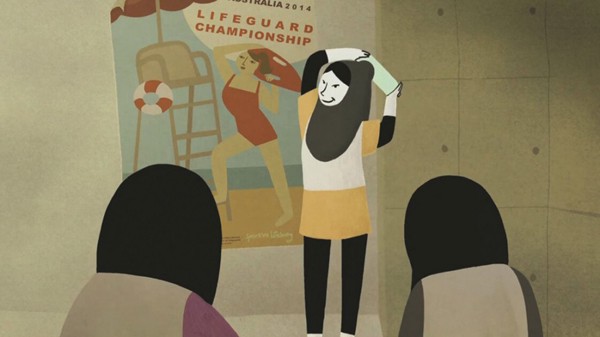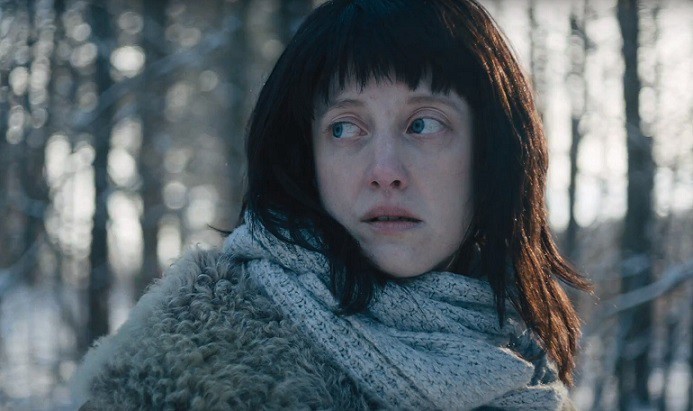“Making a short film might be both the launch and the pinnacle of [many female filmmakers’] careers,” concludes a comprehensive new study that looks at how often women start on unequal terrain in their professional paths. And the numbers just get worse from there. Women have directed 28% of the narrative shorts in the top 10 festivals worldwide, but only 18% of the narrative features at Sundance from 2002–2012, 16% of TV episodes in the 2014–2015 season and 4.1% of the 1,300 top-grossing films of the past 13 years.
The stats are slightly better in the documentary field. Women have directed 37% of documentary shorts, 34.5% of documentary features at Sundance and 22% of the 100 top-grossing documentary directors over the last 12 years. Despite the higher numbers in the nonfiction field, though, there’s still a downward trajectory to women’s employment as the prestige and professionalism of the categories ascend.
With her latest research, Professor Stacy L. Smith of USC’s Media, Diversity, & Social Change Initiative wanted to see how women directors are disadvantaged from the earliest stages of their careers. To that end, Smith and her team crunched the numbers on the decline in female filmmaking from where many get their start: short films.
Women have directed 32% overall of short- and mid-length shorts at the top 10 film festivals — a statistic that doesn’t reach parity, of course, but is certainly much higher than any nearly any other field in the film industry. But “female film directors face a fiscal cliff in their careers soon after making a short film,” commented Smith. “Male and female directors are put on opposite paths as their careers progress. For males, opportunities grow, while for females, they vanish.”
As for why women continue to be shut out of an industry that badly needs them, the female filmmakers interviewed by Smith and her team noted a variety of reasons, such as work-life balance, difficulty attaining financing and lack of interest in female-centric subjects.
Here are the study’s key findings on women’s representation in the field of shorts, emerging female directors’ views on the obstacles to women’s advancement and how Lunafest, one of the study’s sponsors, differs from other festivals in terms of gender representation.
Female Directors of Short Films
— Females fill almost a third of the directing pipeline. Of the 3,933 short film directors at 10 top worldwide festivals, a full 68 percent were males and 32 percent were females. This calculates into a gender ratio of 2.13 male directors to every 1 female director.
— Females were more likely to be directors of documentary shorts than narrative or animated shorts. 37 percent of documentary directors were women versus 31 percent of animated directors and 28 percent of narrative directors.
— Female documentary directors fare better in some countries than others. Female helmers of documentaries were more likely to have films based outside the U.S. (40%) than from the U.S. (30%). The analysis for narrative and animated short/mid-length films was not related to country of origin.
Barriers Facing Female Directors and Opportunities for Change
— Work/family balance (64%). Participants stated that the tasks associated with their careers are made more difficult by familial responsibilities. Responses in this category included personal challenges faced, general statements of difficulty, and considering the timing of parenthood or career moves.
— Finance (61%). Interviewees mentioned that project financing was difficult, and a few personal financial barriers were described. Of females who had never made a feature film, 58 percent reported financial obstacles to creating longer-form content.
— Subject matter, cast, or crew of films (29%). Women described difficulty generating finance or interest in films about females or individuals from underrepresented groups, in stereotypically feminine genres, or for female-oriented films.
— Three additional barriers were mentioned by female participants. The first was that the entertainment industry favors males (25%). Women also stated that non-gender specific closed networks (14%) in the industry make it difficult to gain access to opportunities for work or funding. Finally, individuals cited stereotyping (14%) or obstacles that arose from being challenged, dismissed, pigeonholed into certain types of content, or limiting norms or beliefs about gender.
— Networking and mentorship (71%) and encouragement or examples/role models (43%) were mentioned by interviewees as ways to support women. Participants also indicated that increasing funding (46%) and helping directors improve skills (32%) were useful for female filmmakers. Several individuals mentioned ways that film schools (25%) could help women. Finally, creating awareness of the problem (18%), showcasing work (18%), and hiring women (11%) were indicated as opportunities for change.
LUNAFEST Content
— LUNAFEST shorts feature girls and women on screen. Across 115 short films, a total of 63 percent of the 744 speaking or named characters evaluated were female and only 37 percent were male. A full 81 percent depicted a female lead/co lead driving the plot. These findings are in stark contrast to the 100 top films of 2014, where 28.1 percent of speaking or named characters were female and only 21 percent of leads or co leads featured a girl or woman.
— LUNAFEST shorts showcase diversity of character race/ethnicity. Of the 715 characters that could be evaluated, 38% were from underrepresented racial/ethnic groups. A full 37 percent of the short films’ leads or co leads were from an underrepresented racial/ethnic group. This deviates from mainstream content, as 26.9 percent of characters and 17 percent of leads or co leads in the 100 top films of 2014 were from underrepresented racial/ethnic groups.
— LUNAFEST shorts showcase diversity of age. Across the 179 characters coded 40–64 years of age, 54 percent were female and 46 percent were male. This is a marked deviation from the 100 top movies of 2014 where only 19.9 percent of all 40–64 year old characters on screen were female.
— LUNAFEST shorts sexualize girls and women on screen. Females were far more likely to be depicted in sexualized or tight attire (23% vs. 6%) and with some nudity (22% vs. 10%) than were males. These trends are similar to those found in the 100 top-grossing movies of 2014.
LUNAFEST is a year-long
traveling film festival of award-winning short films by, for and about women. Over the past 15 years, the festival has appeared in over 175 cities and reached over 25,000 people. 100% of all net proceeds from LUNAFEST screenings go to nonprofit organizations. To date, LUNAFEST has raised more than $3 million dollars for women’s organizations.
This year’s LUNAFEST will be launched in San Francisco on October 8. For more information on the films in this year’s LUNAFEST circuit and to find out about upcoming screening locations, please visit www.lunafest.org
Read the full study here.







